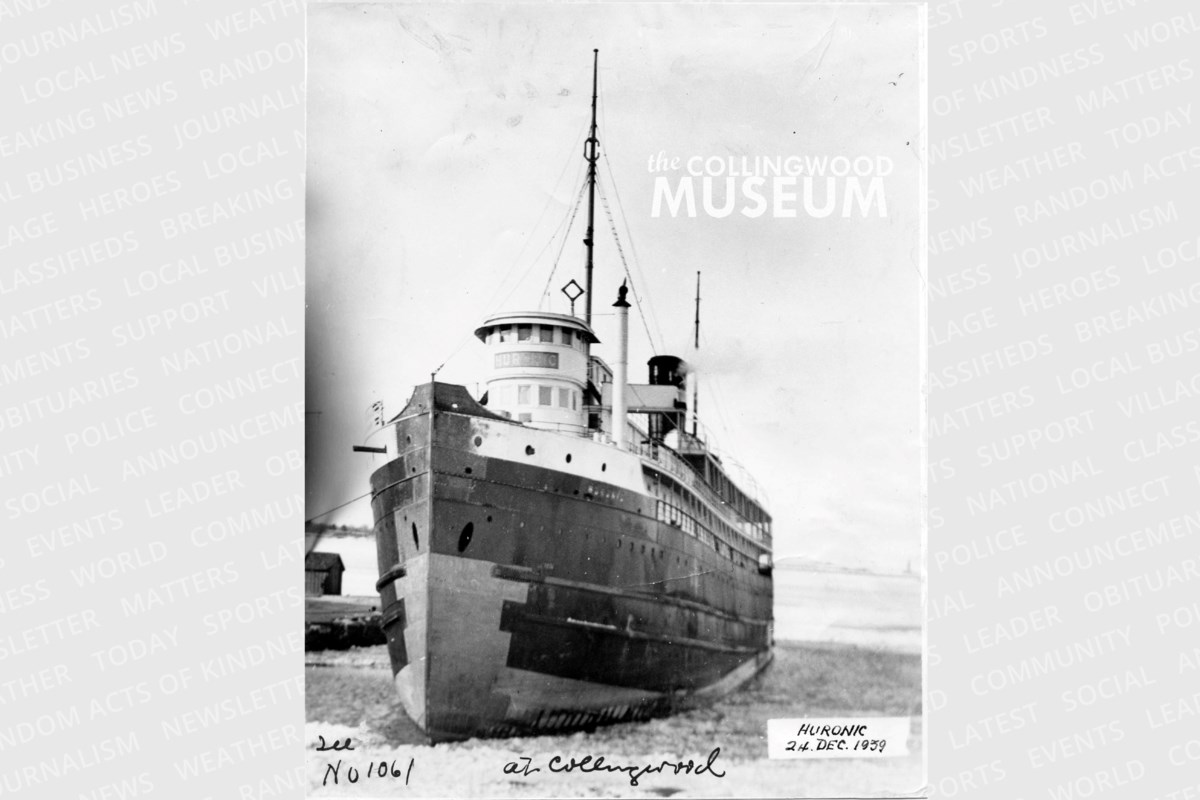Collingwood’s first steel ship spent Christmas Eve in harbour 85 years ago

The Collingwood Museum is currently showcasing a series of historic photographs that highlight the rich maritime history of Collingwood, Ontario. This ongoing series is curated by Melissa Shaw, the museum supervisor, who provides insightful research and writing. Among the many stories captured in these photographs is that of the Huronic, a ship that holds a special place in Collingwood’s shipbuilding legacy. Launched on September 12, 1901, the Huronic was the first steel ship constructed and launched from Collingwood’s harbor. This article delves into the significance of the Huronic and its impact on the local maritime industry.
The Construction of the Huronic
The Huronic’s construction marked a pivotal moment in Collingwood’s shipbuilding history. Before the Huronic, the shipyard primarily built large wooden vessels. These ships were float-launched, a method that involved flooding the dry dock to allow the completed ship to rise gradually. This technique was less dramatic than the side launch method that Collingwood would become famous for.
The Huronic was constructed in 1901, and two photographs from this period are preserved in the Collingwood Museum’s collection. These images, numbered 902 and 903, are the earliest known records of the Huronic’s construction. Photograph 902 captures the ship being built on the east side of Collingwood’s first dry dock, surrounded by wooden scaffolding. Interestingly, no workers are visible in this shot, suggesting a quiet moment in the bustling shipyard.
Photograph 903 showcases one of the Scotch boilers that were delivered for the Huronic. This boiler was transported on an open rail car, and a well-dressed gentleman stands beside it, highlighting the boiler’s impressive size. The Huronic was powered by four Scotch boilers, which generated 175 pounds of steam pressure. This innovative design was crucial for the ship’s performance and efficiency.
The Historic Launch and Legacy of the Huronic
The launch of the Huronic on September 12, 1901, was a momentous occasion for Collingwood. The event drew approximately 7,000 spectators, who gathered to witness the historic side launch. The ceremony was officiated by Miss Long, the niece of the shipyard’s president, John Long. As the ship slid into the water, the sounds of celebration filled the air, with whistles from nearby sawmills echoing for five minutes in honor of the launch.
Designed by shipyard manager Hugh Calderwood, the Huronic was over 300 feet long and could accommodate 250 cabin passengers. It featured a dining room that could seat 120 guests and included a smoking room among other amenities. In addition to passenger service, the ship had five cargo hold compartments with a total capacity of 80,000 bushels of wheat, along with space for 700 tonnes of package freight on the main deck.
The Huronic served with the Northern Navigation Company from 1902 until 1913 and then with Canada Steamship Lines until 1950. In its later years, the upper cabin was removed, and the ship transitioned to the package freight trade. The Huronic made its final journey to Hamilton in December 1949, where it was ultimately scrapped in 1950.
Today, the legacy of the Huronic is honored at the Collingwood Museum, where a model of the ship is displayed alongside a historic photograph of its launch. Additionally, a modern vessel named Huronic operates out of Collingwood’s harbor, offering scenic tours and dinner cruises. This contemporary boat pays tribute to the original Huronic, ensuring that its legacy continues to be celebrated in the community. A brass plaque commemorating the Huronic is also located along Collingwood’s Walk of History, serving as a reminder of the ship’s significant role in the town’s maritime heritage.
